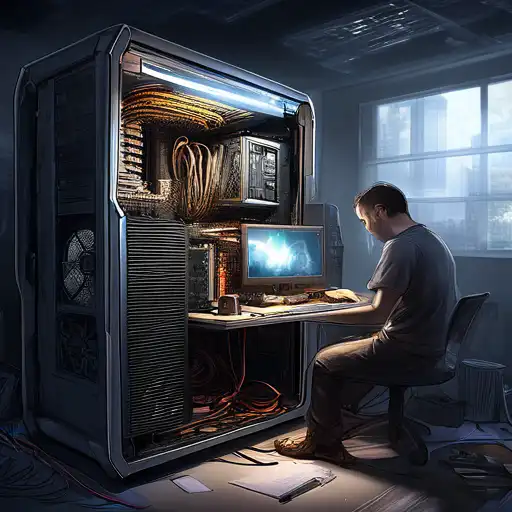Introduction to PC Building
Building your own PC can be a rewarding experience, offering both personal satisfaction and the opportunity to customize your computer to your exact needs. Whether you're a gamer, a content creator, or just someone looking for a powerful machine, this guide will walk you through the process step by step.
Why Build Your Own PC?
Building your own PC allows you to select each component based on your specific requirements, ensuring optimal performance and value for money. It also provides a deeper understanding of how computers work, which can be beneficial for troubleshooting and upgrades in the future.
Essential Components for Building a PC
Before you start, it's important to understand the key components you'll need:
- Processor (CPU): The brain of your computer, responsible for executing instructions.
- Motherboard: The main circuit board that connects all components.
- Memory (RAM): Temporary storage that your CPU uses to store data actively in use.
- Storage (SSD/HDD): Where your operating system, applications, and files are stored.
- Graphics Card (GPU): Essential for rendering images, especially important for gaming and video editing.
- Power Supply Unit (PSU): Powers all components of your PC.
- Case: Houses all the components and protects them from dust and damage.
Choosing the Right Components
Selecting the right components is crucial for building a PC that meets your needs. Consider factors like compatibility, performance, and budget. Researching and comparing different options can help you make informed decisions.
Step-by-Step Guide to Building Your PC
Now that you have all your components, it's time to start building. Follow these steps to assemble your PC:
- Prepare Your Workspace: Ensure you have a clean, static-free area to work in.
- Install the CPU: Carefully place the CPU into the motherboard's socket.
- Install RAM: Insert the RAM sticks into the appropriate slots on the motherboard.
- Mount the Motherboard: Secure the motherboard inside the case.
- Install Storage: Connect your SSD or HDD to the motherboard and power supply.
- Install the GPU: Place the graphics card into the PCIe slot on the motherboard.
- Connect the PSU: Attach the power supply to all components.
- Cable Management: Organize cables to ensure good airflow and aesthetics.
- Power On: Connect your monitor, keyboard, and mouse, then power on your PC to test.
Installing the Operating System
After assembling your PC, you'll need to install an operating system. Whether you choose Windows, Linux, or another OS, ensure you have a bootable USB drive or DVD ready for installation.
Final Thoughts
Building a PC may seem daunting at first, but with the right preparation and guidance, it's an achievable project for beginners. Not only does it offer a sense of accomplishment, but it also allows for a fully customized computing experience. Remember to take your time, follow safety precautions, and enjoy the process of creating something uniquely yours.
For more information on selecting components, check out our guide to choosing PC components.
